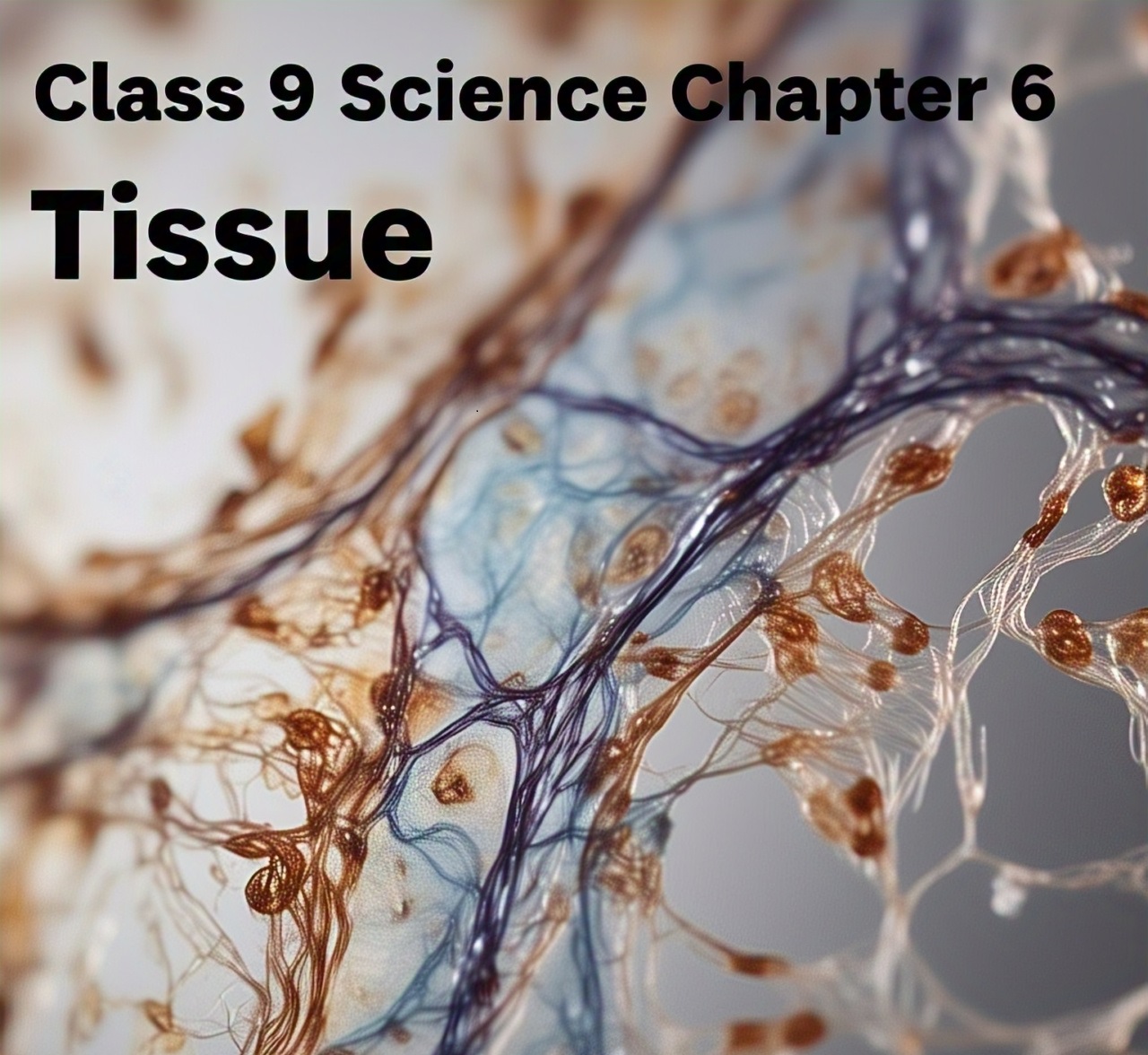Class 9 Science Chapter 6 Tissues One Liners
What is a tissue?
A group of cells with similar structure and function is called a tissue.
Who first introduced the term ’tissue’?
The term ’tissue’ was coined by Bichat.
What are the two broad categories of plant tissues?
Plant tissues are divided into meristematic and permanent tissues.
What is the main characteristic of meristematic tissue?
Meristematic tissue consists of actively dividing cells.
Where is apical meristem located in plants?
Apical meristem is found at the growing tips of roots and stems.
What happens to meristematic cells as they mature?
Meristematic cells differentiate into permanent tissues.
What are the three types of simple permanent tissues?
Parenchyma, collenchyma, and sclerenchyma are simple permanent tissues.
What is the function of parenchyma tissue?
Parenchyma stores food and helps in photosynthesis.
How does collenchyma support young plants?
Collenchyma provides mechanical support and flexibility to growing parts.
Why are sclerenchyma cells dead at maturity?
Sclerenchyma cells develop thick lignified walls and die at maturity.
What are complex tissues in plants?
Complex tissues like xylem and phloem contain multiple cell types.
What are the four components of xylem?
Xylem consists of tracheids, vessels, xylem parenchyma, and xylem fibers.
What is the function of tracheids?
Tracheids are elongated cells that transport water and minerals.
Why are xylem vessels more efficient than tracheids?
Xylem vessels have perforated end walls allowing continuous water flow.
What substances are transported by phloem?
Phloem transports organic nutrients like sucrose.
What are the cellular components of phloem?
Phloem contains sieve tubes, companion cells, phloem fibers, and phloem parenchyma.
How do sieve tubes differ from other plant cells?
Sieve tubes lack nuclei but remain alive due to companion cells.
What is the role of companion cells?
Companion cells provide metabolic support to sieve tube elements.
What are the three types of plant tissue systems?
Epidermal, ground, and vascular tissue systems exist in plants.
What is the function of the epidermis?
The epidermis protects plants and prevents water loss.
What are stomata and their function?
Stomata are pores for gas exchange and transpiration.
Where is cork cambium located?
Cork cambium is found in the bark of woody plants.
What replaces the epidermis in older stems?
Cork cells replace the epidermis in older stems.
Why is cork impervious to water?
Cork contains suberin, making it waterproof.
What are the four types of animal tissues?
Epithelial, connective, muscular, and nervous tissues.
What is the function of epithelial tissue?
Epithelial tissue covers body surfaces and organs.
How is squamous epithelium structured?
Squamous epithelium has thin, flat cells like floor tiles.
Where is cuboidal epithelium found?
Cuboidal epithelium lines kidney tubules and salivary glands.
What is unique about columnar epithelium?
Columnar epithelium has tall, pillar-like cells often with cilia.
What is glandular epithelium?
Glandular epithelium secretes substances like enzymes or hormones.
What are the two types of connective tissue?
Loose (areolar) and dense connective tissues.
What is the matrix of bone made of?
Bone matrix contains calcium salts and collagen fibers.
Why is blood considered a connective tissue?
Blood connects body parts by transporting substances.
What are the components of blood?
Blood contains plasma, RBCs, WBCs, and platelets.
What is lymph?
Lymph is a fluid derived from blood plasma that transports fats.
What are tendons made of?
Tendons are made of dense, fibrous connective tissue.
How do ligaments differ from tendons?
Ligaments connect bones to bones, while tendons connect muscles to bones.
What is cartilage?
Cartilage is a flexible connective tissue with chondrocytes.
Where is cartilage found?
Cartilage is found in joints, nose, ears, and trachea.
What is the function of adipose tissue?
Adipose tissue stores fat and insulates the body.
What are the three types of muscle tissue?
Skeletal, smooth, and cardiac muscle tissues.
Where is skeletal muscle found?
Skeletal muscle is attached to bones for voluntary movement.
Why are smooth muscles called involuntary?
Smooth muscles work without conscious control (e.g., in intestines).
What is unique about cardiac muscle?
Cardiac muscle is striated and involuntary, found only in the heart.
What are intercalated discs?
Intercalated discs are junctions between cardiac muscle cells.
What is the unit of nervous tissue?
The neuron is the functional unit of nervous tissue.
What are the parts of a neuron?
Neurons have dendrites, cell body, and axon.
What is the function of dendrites?
Dendrites receive signals from other neurons.
What is a nerve impulse?
A nerve impulse is an electrical signal transmitted by neurons.
What are neuroglia?
Neuroglia are supporting cells for neurons in the nervous system.
How do plants and animal tissues differ?
Plant tissues have cell walls; animal tissues do not.
Why do plants need more supportive tissue?
Plants require mechanical strength to stand upright.
What tissue allows plant growth throughout life?
Meristematic tissue enables indefinite plant growth.
Why don’t animals have dead tissues like plants?
Animals move and require flexible, living tissues.
What is the role of husk fibers in coconuts?
Husk fibers (sclerenchyma) provide rigidity and protection.
How does xylem differ from phloem?
Xylem transports water upward; phloem transports food bidirectionally.
Why are voluntary muscles striated?
Striations are due to organized actin and myosin filaments.
What happens when nervous tissue is damaged?
Damaged neurons usually cannot regenerate.
Why is blood called a fluid connective tissue?
Blood has a fluid matrix (plasma) and connects body systems.
What is the function of platelets?
Platelets help in blood clotting to prevent bleeding.
